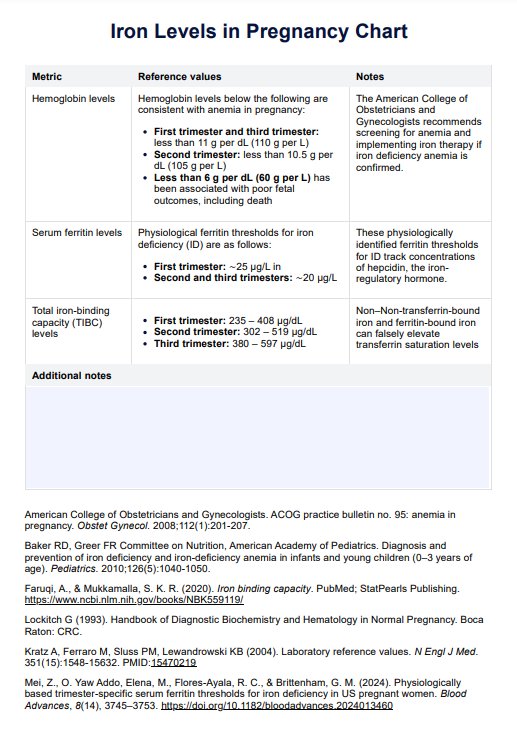This chart is typically requested by healthcare professionals and members of the pregnancy team, such as midwives, nutritionists, and doctors, when assessing the pregnant patient for potential iron-related issues.

Iron Levels In Pregnancy
Learn how to utilize a crucial tool in monitoring and managing iron-related parameters in pregnant patients and identify key risks for superior care delivery.
Use Template
Iron Levels In Pregnancy Template
Commonly asked questions
These charts are utilized in the 24-28 week pregnancy assessment and when the patient presents with typical symptoms of iron deficiency anemia.
This charting tool collates patient information and medical history, clearly displays the results of iron parameters, identifies and assesses symptoms, creates treatment plans and diagnoses, and monitors and safely records all interventions.
EHR and practice management software
Get started for free
*No credit card required
Free
$0/usd
Unlimited clients
Telehealth
1GB of storage
Client portal text
Automated billing and online payments











